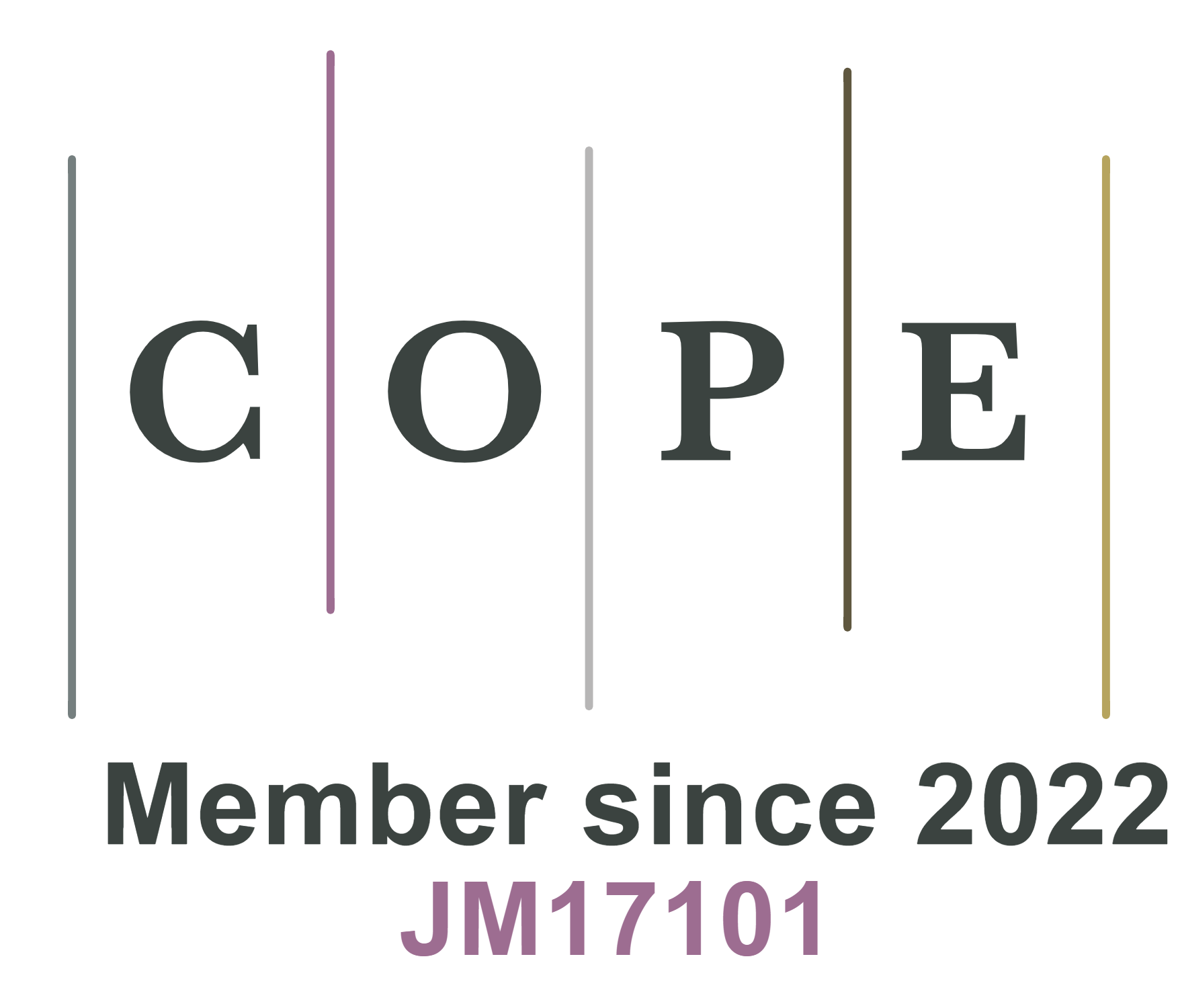REFERENCES
1. Cui P, Qu S, Zhang Q, et al. Perovskite homojunction solar cells: opportunities and challenges. Energy Mater 2021;1:100014.
2. Yang M, Wei W, Zhou X, Wang Z, Duan C. Non-fused ring acceptors for organic solar cells. Energy Mater 2021;1:100008.
3. Fan Q, Yan S, Wang H. Nanoscale redox reaction unlocking the next-generation low temperature fuel cell. Energy Mater 2022;2:200002.
4. Lu Y, Zhu B, Shi J, Yun S. Advanced low-temperature solid oxide fuel cells based on a built-in electric field. Energy Mater 2021;1:100007.
5. Zhu B, Mi Y, Xia C, et al. A nanoscale perspective on solid oxide and semiconductor membrane fuel cells: materials and technology. Energy Mater 2021;1:100002.
6. Cao X, Li C, Lu Y, et al. Catalysis of Au nano-pyramids formed across the surfaces of ordered Au nano-ring arrays. J Catal 2019;377:389-99.
7. Cao X, Li C, Peng D, et al. Highly strained au nanoparticles for improved electrocatalysis of ethanol oxidation reaction. J Phys Chem Lett 2020;11:3005-13.
8. Cao X, Peng D, Wu C, et al. Flexible Au micro-array electrode with atomic-scale Au thin film for enhanced ethanol oxidation reaction. Nano Res 2021;14:311-9.
9. He C, Cheng J, Liu Y, Zhang X, Wang B. Thin-walled hollow fibers for flexible high energy density fiber-shaped supercapacitors. Energy Mater 2021;1:100010.
10. Castillo J, Qiao L, Santiago A, et al. Perspective of polymer-based solid-state Li-S batteries. Energy Mater 2022;2:200003.
11. Huang T, Long M, Xiao JX, Liu H, Wang G. Recent research on emerging organic electrode materials for energy storage. Energy Mater 2021;1:100009.
12. Chang H, Wu Y, Han X, Yi T. Recent developments in advanced anode materials for lithium-ion batteries. Energy Mater 2021;1:100003.
13. Bashir T, Ismail SA, Song Y, et al. A review of the energy storage aspects of chemical elements for lithium-ion based batteries. Energy Mater 2021;1:100019.
15. Ogden JM. P Rospects For B Uilding A H Ydrogen E Nergy I Nfrastructure. Annu Rev Energy Environ 1999;24:227-79.
16. Lin Y, Yuan G, Liu R, Zhou S, Sheehan SW, Wang D. Semiconductor nanostructure-based photoelectrochemical water splitting: A brief review. Chem Phys Lett 2011;507:209-15.
17. Ahmad H, Kamarudin S, Minggu L, Kassim M. Hydrogen from photo-catalytic water splitting process: A review. Renew. . Sust. Energ. Rev 2015;43:599-610.
18. Moniz SJA, Shevlin SA, Martin DJ, Guo Z, Tang J. Visible-light driven heterojunction photocatalysts for water splitting-a critical review. Energy Environ Sci 2015;8:731-59.
19. Anantharaj S, Ede SR, Sakthikumar K, Karthick K, Mishra S, Kundu S. Recent trends and perspectives in electrochemical water splitting with an emphasis on sulfide, selenide, and phosphide catalysts of Fe, Co, and Ni: a review. ACS Catal 2016;6:8069-97.
20. Yan Y, Xia BY, Zhao B, Wang X. A review on noble-metal-free bifunctional heterogeneous catalysts for overall electrochemical water splitting. J Mater Chem A 2016;4:17587-603.
21. Joy J, Mathew J, George SC. Nanomaterials for photoelectrochemical water splitting-review. Int. J. Hydrog ;43:4804-17.
22. Tavares M, Machado S, Mazo L. Study of hydrogen evolution reaction in acid medium on Pt microelectrodes. Electrochimica Acta 2001;46:4359-69.
23. Skúlason E, Karlberg GS, Rossmeisl J, et al. Density functional theory calculations for the hydrogen evolution reaction in an electrochemical double layer on the Pt(111) electrode. Phys Chem Chem Phys 2007;9:3241-50.
24. Grigoriev S, Millet P, Fateev V. Evaluation of carbon-supported Pt and Pd nanoparticles for the hydrogen evolution reaction in PEM water electrolysers. J ;177:281-5.
25. Bai S, Wang C, Deng M, et al. Surface polarization matters: enhancing the hydrogen-evolution reaction by shrinking Pt shells in Pt-Pd-graphene stack structures. Angew Chem Int Ed Engl 2014;53:12120-4.
26. Zhang B, Li C, Yang G, et al. Nanostructured CuO/C hollow shell@3D copper dendrites as a highly efficient electrocatalyst for oxygen evolution reaction. ACS Appl Mater Interfaces 2018;10:23807-12.
27. Li C, Zhang B, Li Y, et al. Self-assembled Cu-Ni bimetal oxide 3D in-plane epitaxial structures for highly efficient oxygen evolution reaction. Appl. Catal. B 2019;244:56-62.
28. Ma M, Yang G, Wang H, et al. Ordered distributed nickel sulfide nanoparticles across graphite nanosheets for efficient oxygen evolution reaction electrocatalyst. Int. J. Hydrog ;44:1544-54.
29. Peng D, Zhang B, Wu J, et al. Growth of lattice coherent Co 9 S 8 /Co 3 O 4 nano-heterostructure for maximizing the catalysis of co-based composites. ChemCatChem 2020;12:2431-5.
30. Li C, Cao X, Li W, Zhang B, Xiao L. Co-synthesis of CuO-ZnO nanoflowers by low voltage liquid plasma discharge with brass electrode. J. Alloys. Compd 2019;773:762-9.
31. Xiong T, Huang B, Wei J, et al. Unveiling the promotion of accelerated water dissociation kinetics on the hydrogen evolution catalysis of NiMoO4 nanorods. J. Energy Chem 2022;67:805-13.
32. Yang F, Xiong T, Huang P, et al. Nanostructured transition metal compounds coated 3D porous core-shell carbon fiber as monolith water splitting electrocatalysts: a general strategy. Chem. Eng. J 2021;423:130279.
33. Bonde J, Moses PG, Jaramillo TF, Nørskov JK, Chorkendorff I. Hydrogen evolution on nano-particulate transition metal sulfides. Faraday Discuss 2008;140:219-31; discussion 297-317.
34. Zhao H, Zhang H, Cui G, et al. A photochemical synthesis route to typical transition metal sulfides as highly efficient cocatalyst for hydrogen evolution: from the case of NiS/g-C3N4. Appl. Catal. B 2018;225:284-90.
35. Benck JD, Hellstern TR, Kibsgaard J, Chakthranont P, Jaramillo TF. Catalyzing the hydrogen evolution reaction (HER) with molybdenum sulfide nanomaterials. ACS Catal 2014;4:3957-71.
36. Xu K, Wang F, Wang Z, et al. Component-controllable WS(2(1-x))Se(2x) nanotubes for efficient hydrogen evolution reaction. ACS Nano 2014;8:8468-76.
37. Abghoui Y, Skúlason E. Hydrogen evolution reaction catalyzed by transition-metal nitrides. J Phys Chem C 2017;121:24036-45.
38. Yu L, Song S, Mcelhenny B, et al. A universal synthesis strategy to make metal nitride electrocatalysts for hydrogen evolution reaction. J Mater Chem A 2019;7:19728-32.
39. Theerthagiri J, Lee SJ, Murthy AP, Madhavan J, Choi MY. Fundamental aspects and recent advances in transition metal nitrides as electrocatalysts for hydrogen evolution reaction: A review. Curr Opin ;24:100805.
40. Chen WF, Muckerman JT, Fujita E. Recent developments in transition metal carbides and nitrides as hydrogen evolution electrocatalysts. Chem Commun (Camb) 2013;49:8896-909.
41. Xiong T, Yao X, Zhu Z, et al. In Situ grown co-based interstitial compounds: non-3d metal and non-metal dual modulation boosts alkaline and acidic hydrogen electrocatalysis. Small 2022;18:e2105331.
42. Kim SK, Qiu Y, Zhang Y, Hurt R, Peterson A. Nanocomposites of transition-metal carbides on reduced graphite oxide as catalysts for the hydrogen evolution reaction. Appl. Catal. B 2018;235:36-44.
43. Meyer S, Nikiforov AV, Petrushina IM, et al. Transition metal carbides (WC, Mo2C, TaC, NbC) as potential electrocatalysts for the hydrogen evolution reaction (HER) at medium temperatures. Int. J. Hydrog. Energy 2015;40:2905-11.
44. Zhao X, Zhang Z, Cao X, et al. Elucidating the sources of activity and stability of FeP electrocatalyst for hydrogen evolution reactions in acidic and alkaline media. Appl. Catal. B 2020;260:118156.
45. Huang K, Zhang B, Wu J, et al. Exploring the impact of atomic lattice deformation on oxygen evolution reactions based on a sub-5 nm pure face-centred cubic high-entropy alloy electrocatalyst. J Mater Chem A 2020;8:11938-47.
46. Zhang Y, Xia X, Cao X, et al. Ultrafine metal nanoparticles/n-doped porous carbon hybrids coated on carbon fibers as flexible and binder-free water splitting catalysts. Adv Energy Mater 2017;7:1700220.
47. Li C, Liu S, Jin X, et al. One-step fabrication of Cu2O-Cu catalytic electrodes with regular porous array by ultra-fast laser scanning. J. Alloys Compd 2022;900:163455.
48. Chang S, Zhang Y, Zhang B, et al. Conductivity modulation of 3D-printed shellular electrodes through embedding nanocrystalline intermetallics into amorphous matrix for ultrahigh-current oxygen evolution. Adv Energy Mater 2021;11:2100968.
49. Lu Y, Huang K, Cao X, et al. Atomically dispersed intrinsic hollow sites of. M :
50. Yang C, Gao N, Wang X, et al. Stable and efficient seawater splitting on a porous phosphate-intercalated NiFe (oxy)hydroxide@NiMoO4 core-shell micropillar electrode. Energy Mater 2021;1:100015.
51. Llorente V, Diaz LA, Lacconi GI, Abuin GC, Franceschini EA. Effect of duty cycle on NiMo alloys prepared by pulsed electrodeposition for hydrogen evolution reaction. J. Alloys Compd 2022;897:163161.
52. Cai C, Liu K, Zhu Y, et al. Optimizing hydrogen binding on Ru Sites with RuCo alloy nanosheets for efficient alkaline hydrogen evolution. Angew Chem Int Ed Engl 2022;61:e202113664.
53. Feng D, Dong Y, Nie P, Zhang L, Qiao Z. CoNiCuMgZn high entropy alloy nanoparticles embedded onto graphene sheets via anchoring and alloying strategy as efficient electrocatalysts for hydrogen evolution reaction. Chem. Eng. J 2022;430:132883.
54. Gao D, Guo J, He H, Xiao P, Zhang Y. Geometric and electronic modulation of fcc NiCo alloy by Group-VI B metal doping to accelerate hydrogen evolution reaction in acidic and alkaline media. Chem. Eng. J 2022;430:133110.
55. Li C, Zhang L, Zhang Y, et al. PtRu alloy nanoparticles embedded on C2N nanosheets for efficient hydrogen evolution reaction in both acidic and alkaline solutions. Chem. Eng. J 2022;428:131085.
56. Ma S, Deng J, Xu Y, et al. Pollen-like self-supported FeIr alloy for improved hydrogen evolution reaction in acid electrolyte. J. Energy Chem 2022;66:560-5.
57. Pang B, Liu X, Liu T, et al. Laser-assisted high-performance PtRu alloy for pH-universal hydrogen evolution. Energy Environ Sci 2022;15:102-8.
58. Gao Y, Xiong T, Li Y, Huang Y, Li Y, Balogun MJT. A simple and scalable approach to remarkably boost the overall water splitting activity of stainless steel electrocatalysts. ACS Omega 2019;4:16130-8.
59. de Chialvo MR, Chialvo AC. Hydrogen evolution reaction on a smooth iron electrode in alkaline solution at different temperatures. Phys Chem Chem Phys ;3:3180-4.
60. Khodir S, Morisada Y, Fujii H. Suppression of hydrogen-induced blisters in SK4 carbon steel alloy by friction stir processing. J Mater Sci 2013;48:4313-20.
61. Griesche A, Dabah E, Kannengiesser T, Kardjilov N, Hilger A, Manke I. Three-dimensional imaging of hydrogen blister in iron with neutron tomography. Acta Materialia 2014;78:14-22.
62. Sun Y, Fujii H, Imai H, Kondoh K. Suppression of hydrogen-induced damage in friction stir welded low carbon steel joints. Corrosion Science 2015;94:88-98.
64. Wasim M, Djukic MB. Hydrogen embrittlement of low carbon structural steel at macro-, micro- and nano-levels. Int. J. Hydrog. Energy 2020;45:2145-56.
65. Ju C, Rigsbee J. The role of microstructure for hydrogen-induced blistering and stepwise cracking in a plain medium carbon steel. Materials Science and Engineering 1985;74:47-53.
66. Islam MM, Zou C, van Duin AC, Raman S. Interactions of hydrogen with the iron and iron carbide interfaces: a ReaxFF molecular dynamics study. Phys Chem Chem Phys 2016;18:761-71.
67. Lou X, Singh PM. Cathodic activities of oxygen and hydrogen on carbon steel in simulated fuel-grade ethanol. Electrochimica Acta 2011;56:2312-20.
68. Safizadeh F, Ghali E, Houlachi G. Electrocatalysis developments for hydrogen evolution reaction in alkaline solutions-a Review. Int. J. Hydrog. Energy 2015;40:256-74.
69. Elmeligi A, Ismail N. Hydrogen evolution reaction of low carbon steel electrode in hydrochloric acid as a source for hydrogen production. Int. J. Hydrog. Energy 2009;34:91-7.
71. Yule LC, Shkirskiy V, Aarons J, et al. Nanoscale active sites for the hydrogen evolution reaction on low carbon steel. J Phys Chem C 2019;123:24146-55.
72. Amikam G, Nativ P, Gendel Y. Chlorine-free alkaline seawater electrolysis for hydrogen production. Int. J. Hydrog. Energy 2018;43:6504-14.
73. Wintrich D, Öhl D, Barwe S, et al. Enhancing the selectivity between oxygen and chlorine towards chlorine during the anodic chlorine evolution reaction on a dimensionally stable anode. Chem Electro Chem 2019;6:3108-12.
74. Duso AB, Chen DD. Proton and hydroxide ion mobility in capillary electrophoresis. Anal Chem 2002;74:2938-42.
75. Dresp S, Dionigi F, Klingenhof M, Strasser P. Direct electrolytic splitting of seawater: opportunities and challenges. ACS Energy Lett 2019;4:933-42.
76. Guo M, Qu Y, Yuan C, Chen S. Electrochemically assisted synthesis of three-dimensional FeP nanosheets to achieve high electrocatalytic activity for hydrogen evolution reaction. Int. J. Hydrog. Energy 2019;44:24197-208.
77. Long X, Li G, Wang Z, et al. Metallic iron-nickel sulfide ultrathin nanosheets as a highly active electrocatalyst for hydrogen evolution reaction in acidic media. J Am Chem Soc 2015;137:11900-3.
78. Zhang C, Shi Y, Yu Y, Du Y, Zhang B. Engineering sulfur defects, atomic thickness, and porous structures into cobalt sulfide nanosheets for efficient electrocatalytic alkaline hydrogen evolution. ACS Catal 2018;8:8077-83.









